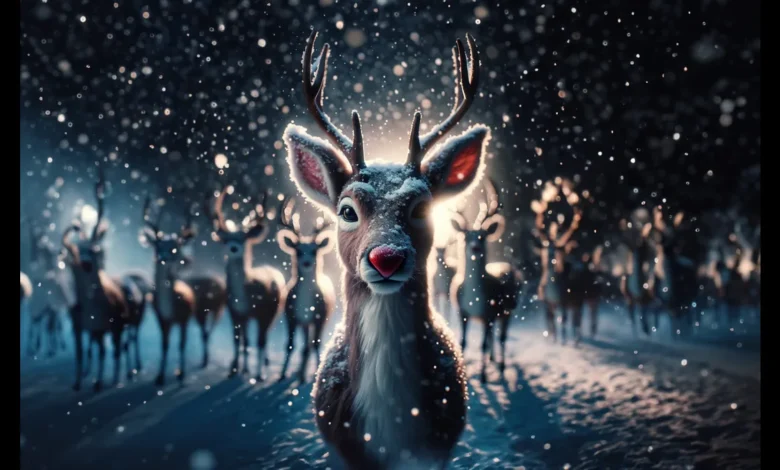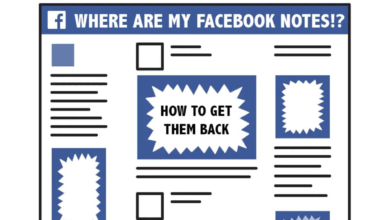Magic and Myth of Rudolph: Unveiling the Story of Santa’s Red-Nosed Reindeer”

Introduction: The Legend of Rudolph
Rudolph the Red-Nosed Reindeer has become an iconic symbol of Christmas, with his bright red nose lighting the way for Santa Claus on his annual journey around the world. But the story of Rudolph is more than just a holiday tale. It is a rich blend of folklore, tradition, and creativity that has evolved over the years to become a key figure in the Christmas tradition. In this article, we’ll take an in-depth look at the origins, history, significance, and lasting impact of Rudolph, exploring everything from his first appearance in literature to his place in pop culture today.
Origin of Rudolph: How a Simple Story Became a Christmas Classic
story begins in 1939 when a department store in Chicago called Montgomery Ward decided to create a holiday booklet to give away to children during Christmas. This initiative aimed to save the company money by producing their own Christmas story instead of purchasing them from outside publishers. Enter Robert L. May, a copywriter at Montgomery Ward who was tasked with writing the story.
Birth of Rudolph
Robert May, who had personal experience with feelings of inadequacy and exclusion, crafted the character of as an underdog with a unique characteristic—a glowing red nose. This nose, unlike the other reindeer’s, made him the subject of ridicule, and he struggled with loneliness and self-doubt. However, in the end, unusual nose becomes his greatest asset when Santa Claus calls upon him to lead his sleigh through a foggy Christmas Eve.
May’s tale of was an instant hit. It was well-received by children, who saw in Rudolph a symbol of acceptance, courage, and the value of differences. The story was so popular that it was eventually published as a book, and later, adapted into various forms of media.
First Published Version
Rudolph’s first public appearance in 1939 was in the form of a booklet titled the Red-Nosed Reindeer. The booklet featured illustrations by Denver Gillen and was a modest success. The Montgomery Ward company distributed over two million copies that year. Initially, it was a free promotional item, but the booklet quickly gained popularity, and the character of took on a life of his own. Soon after, May was able to expand the story and create a more complex world around his character.
The book’s success led to multiple adaptations, including radio shows, comic strips, and eventually, the iconic 1949 song.
Rudolph’s Role in Christmas and Why He Stands Out
is no ordinary reindeer. Unlike the other reindeer who were traditionally depicted as strong, reliable, and fast, he’s often portrayed as an outsider—a figure who didn’t fit in at first but ultimately became a hero. His uniqueness and his journey of overcoming adversity have made him a symbol of hope, resilience, and the idea that our differences can be strengths.
Symbol of Overcoming Adversity
Rudolph’s story resonates because it mirrors real-life struggles. Many people feel like outsiders at some point in their lives, whether because of physical appearance, personality traits, or circumstances. journey from being ridiculed by his peers to becoming the hero of the story represents the triumph of individuality over conformity.
Children, especially, are drawn to because his story emphasizes the importance of kindness, acceptance, and working together. By focusing on these values, the story of transcends the holiday season, becoming a timeless message about how differences can lead to success.
Why Santa Needs Rudolph
In most portrayals of the Christmas story, Santa’s reindeer are seen as his dependable team, with names like Dasher, Dancer, Prancer, and Vixen. These reindeer are known for their speed and reliability. But in the story of , his glowing red nose provides the light needed to guide Santa’s sleigh through harsh winter weather, proving that every team needs an unexpected member who brings something unique to the table.
, therefore, fills an essential role in the Christmas mythos. Without him, Santa would not be able to deliver presents to children around the world. The story reinforces the notion that everyone has a unique contribution to make, no matter how different they may seem.
Evolution of Rudolph: From Booklet to Pop Culture Icon
While Robert May’s original story was relatively simple, the character of would soon go on to have a lasting impact on pop culture. Over the decades, the reindeer has appeared in numerous forms of media, including animated television specials, feature films, songs, and merchandise.
Famous Song: “Rudolph the Red-Nosed Reindeer”
In 1949, story took another giant leap forward when Gene Autry recorded the song the Red-Nosed Reindeer. The song became an immediate hit and is now considered one of the most recognizable Christmas songs of all time. The catchy melody, combined with the heartwarming tale of journey from outcast to hero, made the character even more beloved.
The song’s success led to numerous cover versions by other artists, including a well-known rendition by Bing Crosby. Its popularity ensured that would become a permanent fixture of Christmas tradition.
Stop-Motion TV Special
Another key milestone in Rudolph’s journey to becoming a Christmas icon was the 1964 stop-motion animated television special, the Red-Nosed Reindeer. Produced by Rankin/Bass Productions, this special introduced audiences to a cast of quirky characters, including the elf Hermey, who dreams of being a dentist, and Yukon Cornelius, the adventurous prospector.
The special’s unique animation style and its catchy songs have made it a holiday classic, airing annually on television in the U.S. and beyond. The stop-motion film has helped keep Rudolph’s story alive for new generations of children and families.
Merchandising and Commercialization
As Rudolph became more embedded in Christmas tradition, his image began to be used on a wide variety of products, from Christmas decorations to clothing and toys. The character’s trademark red nose became instantly recognizable, and Rudolph’s appeal transcended just being a holiday mascot to becoming a year-round figure for various forms of consumer culture.
Character of Rudolph and His Influence on Modern-Day Christmas
Rudolph’s story goes beyond being a holiday favorite. His journey represents the importance of accepting oneself and others, making him a character who embodies universal values. He stands for kindness, overcoming adversity, and the power of collaboration. These themes have contributed to his enduring popularity and made him a key part of modern-day Christmas celebrations.
Lessons in Acceptance
One of the key lessons Rudolph imparts is the importance of embracing differences. Throughout his life, Rudolph is made fun of for his red nose, which sets him apart from the other reindeer. But by the end of the story, his nose becomes his greatest asset. Rudolph teaches children (and adults) that differences should be celebrated, not ridiculed. His story helps challenge societal norms about beauty and normalcy, encouraging people to embrace what makes them unique.
A Symbol of Hope
Rudolph’s rise from a figure of mockery to a symbol of hope for Santa Claus and the other reindeer is also a powerful metaphor. It reminds us that even when we feel unimportant or overlooked, we can still be the ones to make a difference when the time comes. It reinforces the idea that each of us has value, and that value is often revealed when we least expect it.
Rudolph’s Impact on Modern Christmas Traditions
Today, Rudolph is an inseparable part of the Christmas season. Whether it’s in the form of songs, TV specials, or ornaments, his red nose and his message of resilience continue to inspire people of all ages. He has found a place not only in Christmas celebrations but also in modern conversations about acceptance, diversity, and the importance of celebrating differences.
Rudolph and the Future: A Timeless Legacy
Rudolph’s legacy continues to grow as each year brings new generations of fans. Whether through films, stage productions, or the continued popularity of the song, the character remains an enduring part of the Christmas season. As we move into the future, it’s clear that Rudolph will continue to evolve and inspire.
Rudolph in the Digital Age
As technology advances, so too does Rudolph’s reach. With the rise of digital media, Rudolph has appeared in countless online games, social media posts, and virtual holiday events. In a world where Christmas traditions are increasingly becoming part of the digital landscape, Rudolph’s story remains an important cultural touchstone.
Timeless Message of Rudolph
At the core of Rudolph’s continued popularity is the timeless message of acceptance and hope. In a world that can often feel divided, Rudolph reminds us of the importance of inclusion, kindness, and the belief that everyone has a unique contribution to make. This message will continue to resonate for generations to come.
Conclusion: The Red-Nosed Reindeer Who Stole Our Hearts
Rudolph the Red-Nosed Reindeer has become more than just a Christmas story; he is a symbol of hope, individuality, and the power of kindness. From his humble beginnings in a promotional booklet to his status as a holiday icon, Rudolph’s legacy has endured through songs, TV specials, and merchandise, becoming one of the most recognizable figures of the Christmas season.
His journey reminds us that sometimes, it’s our differences that make us stand out and that with a little help from friends and a lot of courage, we can overcome any obstacle. As we celebrate the holiday season each year, Rudolph’s glowing red nose continues to light the way, guiding us toward a brighter, more inclusive future.





